How to Fix a Ceiling Leak
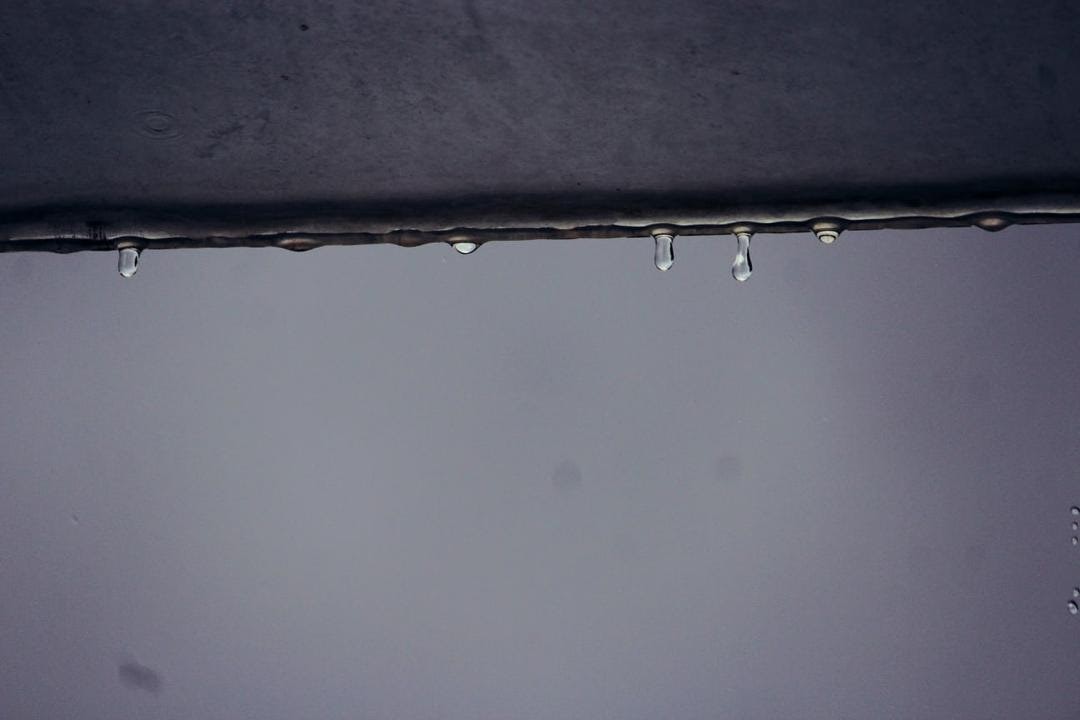
Drip, drip, drip… we’ve all been there at one time or the other.
A ceiling leak can be one of the most frustrating household problems around, and although it’s tempting to put off dealing with the problem at hand, the greatest mistake you can make is to ignore it.
Thankfully, we know exactly how to fix a ceiling leak. Read on to discover our experts’ top tips and the DIY materials you’ll need to get that leak sorted.
Why Do I Need to Fix a Leaking Ceiling?
Ceiling leaks have the potential to cause major structural damage to your home and can become a much larger problem faster than the time it takes to wipe away those drips.
They can also cause more immediate danger and health issues, particularly leaks from a toilet ceiling or a leak in the ceiling from an upstairs shower, for example.
It’s crucial to fix a leaking ceiling as early as possible and with the right information, you can have it done in no time.
Causes of Leaks
Keeping an eye out for potential causes of leaks can help prevent any major issues, and if a ceiling leak does spring up, you’ll know where to check first. Here are the two main culprits:
Roofing Problems
This could be anything from a hole in your roof caused by sudden damage, or weakness that has developed over time; roofs older than fifteen years are the most prone to faults. Damage to your roof can allow water to leak through, and if you have a ceiling leak on the upper floors of your home, could be a likely culprit.
Plumbing Problems
Possibly the most common types of leaks in Irish homes, plumbing problems can be sourced back to a toilet, bathtub, kitchen, or other pipes around the house and unfortunately can be slightly more difficult to identify and fix. A ceiling leak could likely be caused by plumbing if it’s either recently installed or very old.
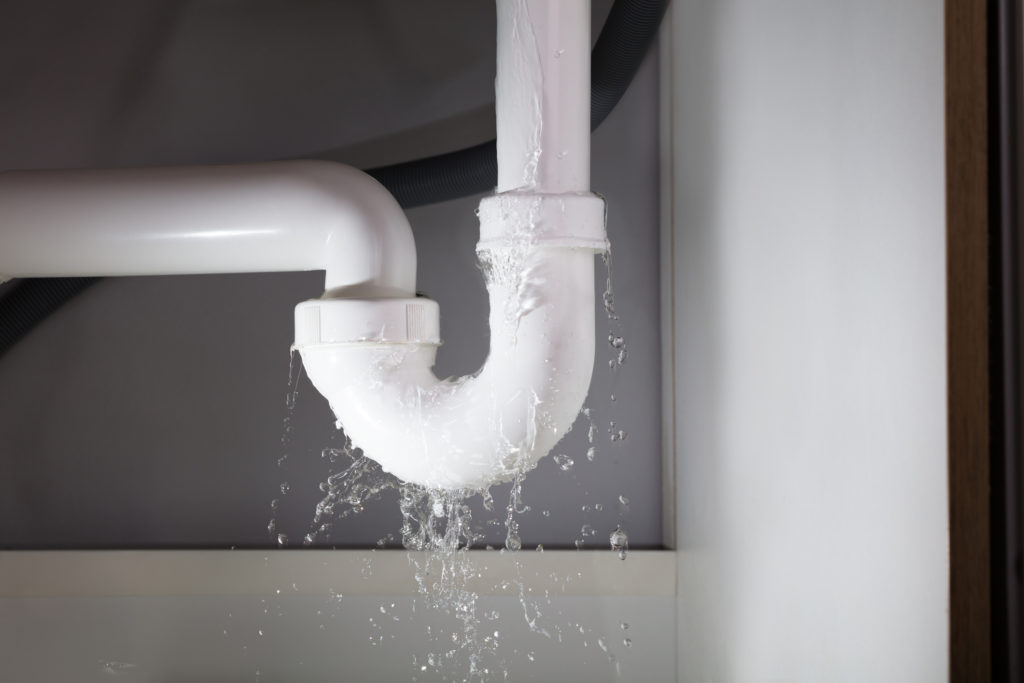
Identifying Leaks
The best way to deal with ceiling leaks is to stop them at the earliest stages. It takes time for water to penetrate the ceiling, and the best course of action is to identify the leak before then. Some of the early signs of a ceiling leak are:
- Blisters on the ceiling
- Peeling of paint on the ceiling
- Depression and caving of the ceiling
- Discolouration, usually brown or black, of a part of the ceiling
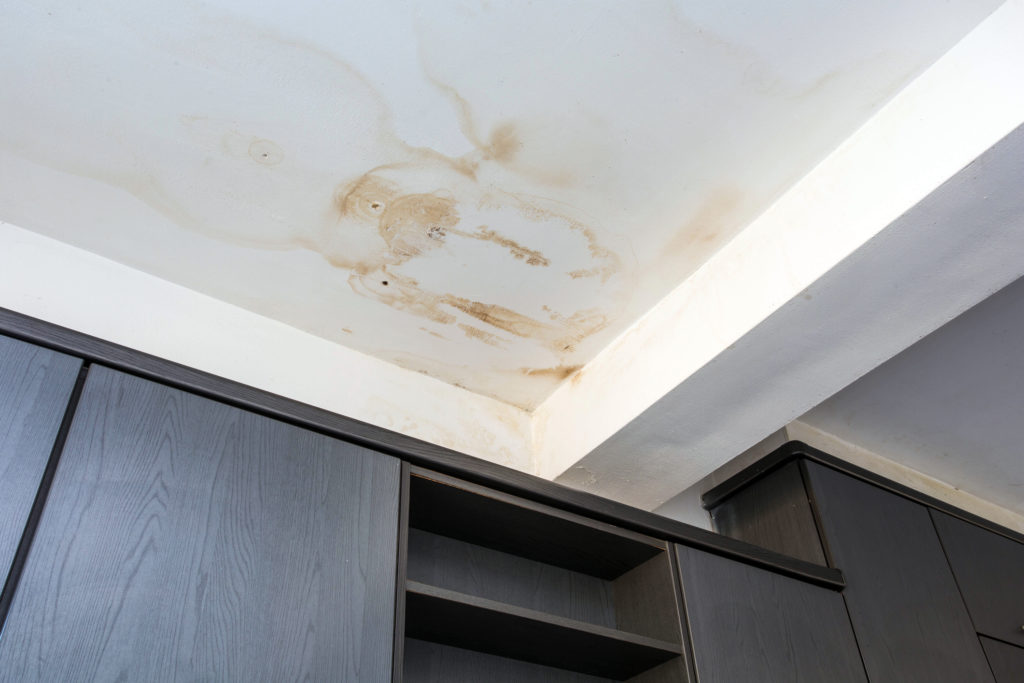
Other than identifying a leak, you also need to determine the cause of the leak. There are pointers you need to look out for, and we’ll consider them below.
How to Identify a Leak in the Ceiling from Roof Problems
- If the leak is directly under the roof, then it is most likely from a roofing problem.
- Study the timing of the leak. If it occurs after or during rain or snowfall, then it is very likely due to a roofing problem.
- Look out for the accumulation of ice on the edges of your roof in the cold season. The chances of having a leaking ceiling rapidly increase with the entrapment of ice on the roof.
How to Identify a Ceiling Leak from Plumbing Problems
- If the leak is directly below pipes and plumbing equipment, it is probably due to a plumbing problem.
- Leaking after using anything connected to the plumbing in the house is a major giveaway. A little trial-and-error might be needed to find the actual source.
- If the dripping water is clean, then the leak is likely due to a plumbing problem.
Fixing a Leaking Ceiling
Now to the most important part – how to fix a leak in the ceiling. Here’s what to do if your ceiling is leaking.
Drain the Leak
The first step to take if you are wondering how to repair ceiling damage is by draining the water in the ceiling. Don’t be deceived by the small droplets; there may be an ocean of water trapped in the ceiling. Draining will make fixing it easier and also reduce the risk of injury and further damage.
To drain a ceiling:
- Lay a cloth or plastic tarp on the ground beneath the leaking ceiling.
- Place a bucket directly under the leak to collect dripping water.
- Turn off the electricity. You never know what’s on the other side.
- Drill a hole in the ceiling at the centre of the affected area.
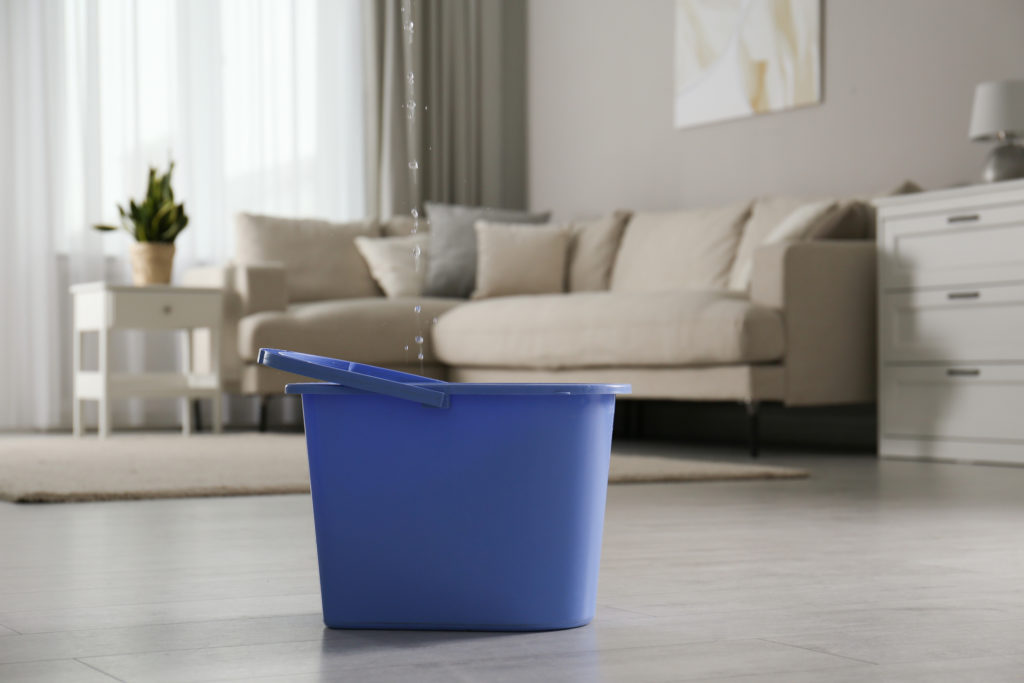
Remember, you are doing yourself a favour by letting out the accumulated water in the ceiling because the longer the water is trapped in the ceiling, the more damage to the ceiling; more damage to the ceiling means a greater risk of collapse.
Fix the Source of the Ceiling Leak
Identifying the source is the next step toward fixing the leak.
A very common mistake people make is to patch the ceiling as soon as they observe a leak, but in reality, that’s not solving the problem; it’s merely masking it. If you keep doing that, it’s only a matter of time before something serious happens. So, don’t hesitate to replace the plumbing equipment(s) and roofing shingles if you need to.
Fix the Ceiling
Finally, you need to patch up any damage that’s occurred. Here’s how to fix the ceiling after a leak:
- Cut a square hole around the affected area using a handsaw or multi-tool. Ensure you include all water-logged parts of the ceiling.
- Place timber braces over the ceiling. The braces should be dry and made out of strong plywood.
- Cut out a piece of drywall that will cover the hole exactly.
- Fit the new drywall into the hole and fix it with screws.
- Coat the drywall with the plaster compound and leave it to dry for 24 hours.
- Use sandpaper to remove any excess compound and paint the drywall.
Top tip: If you see wires or electrical connections after drilling the hole, stop working immediately and call a professional; this can be extremely dangerous and cause serious injury.
How to Get Rid of Damp Stains on a Ceiling
Most of the time after a ceiling leak, only a small part of the ceiling is affected. If you simply have a patch of discolouration and are wondering how to cover a leak stain on your ceiling, the answer is thankfully very simple.
A fresh lick (or two) of paint should adequately cover damp stains on the ceiling. If you’ve experienced some old paint peeling off, remove these bits and give the area a quick sanding down before painting. Good as new!
The Woodie’s team is always here to help, whether you need building materials or expert advice, so don’t hesitate to get in touch!
Shop DIY & Building Materials at Woodie’s >>
These methods serve as a guide only. We encourage you to take full caution when undertaking any project within the home.
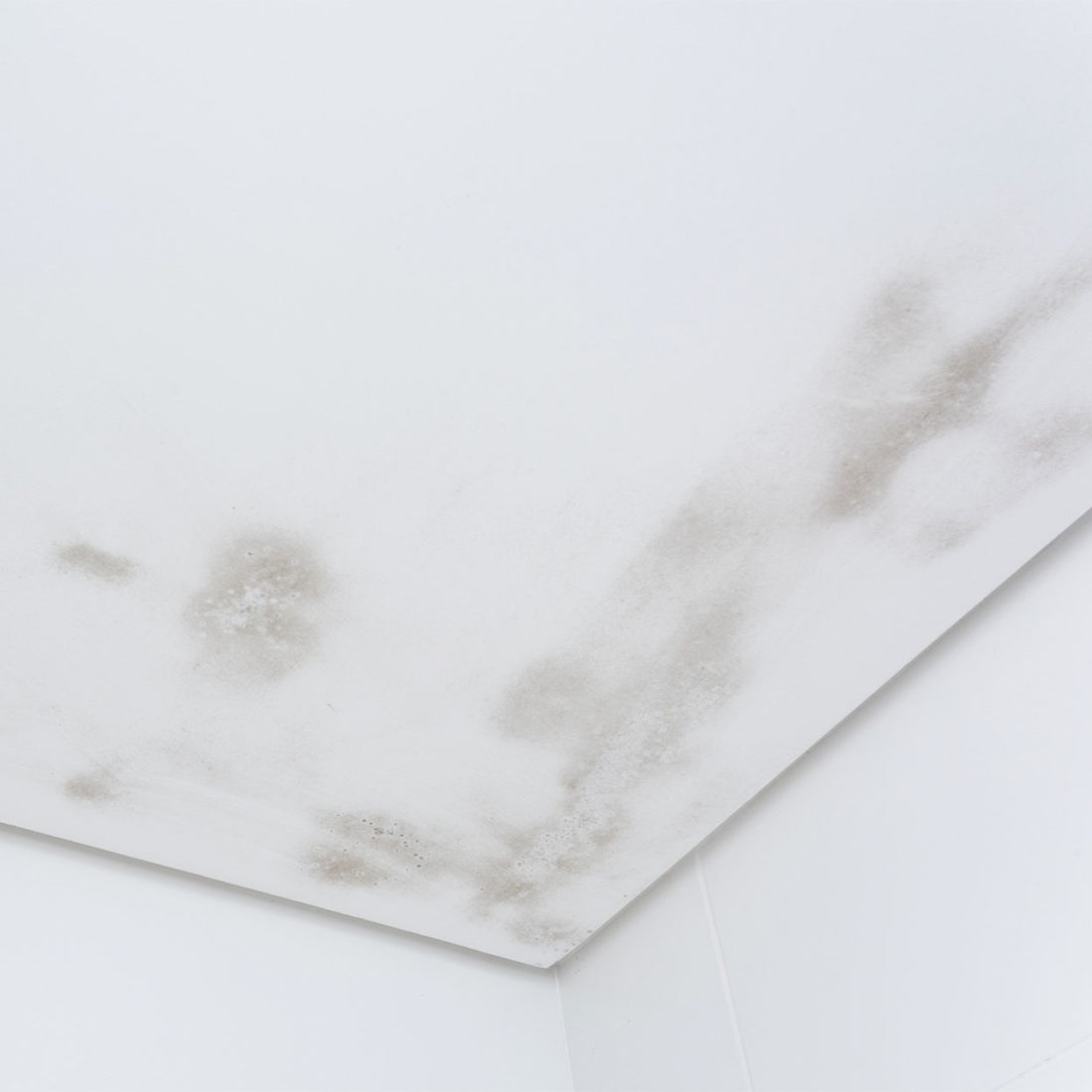
- DIY & Building
How to Safely Remove Damp and Mould From Ceilings
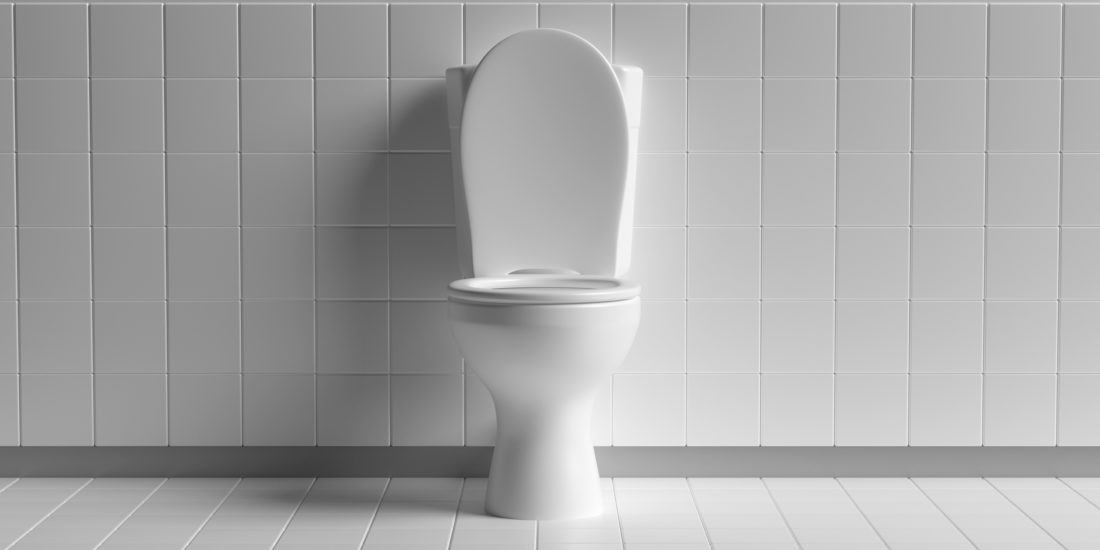
- DIY & Building,
- Bathroom & Plumbing
How to Unblock a Toilet: The Ultimate DIY Guide
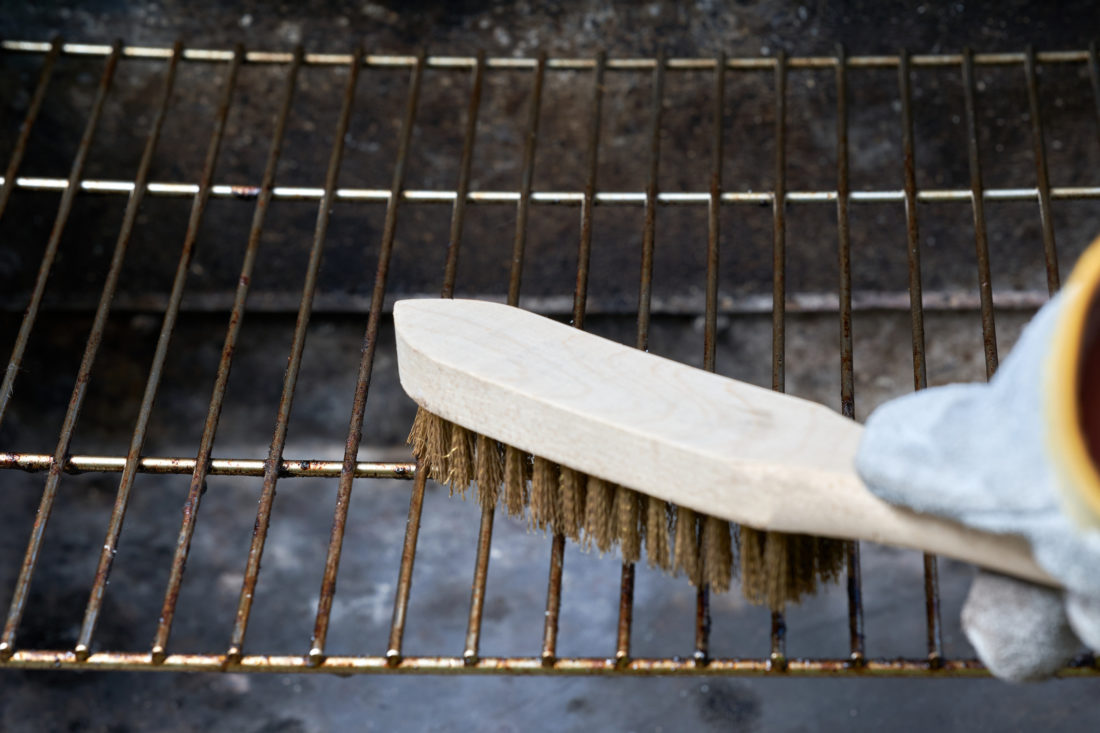
- DIY & Building
How to Remove Rust From Just About Everything
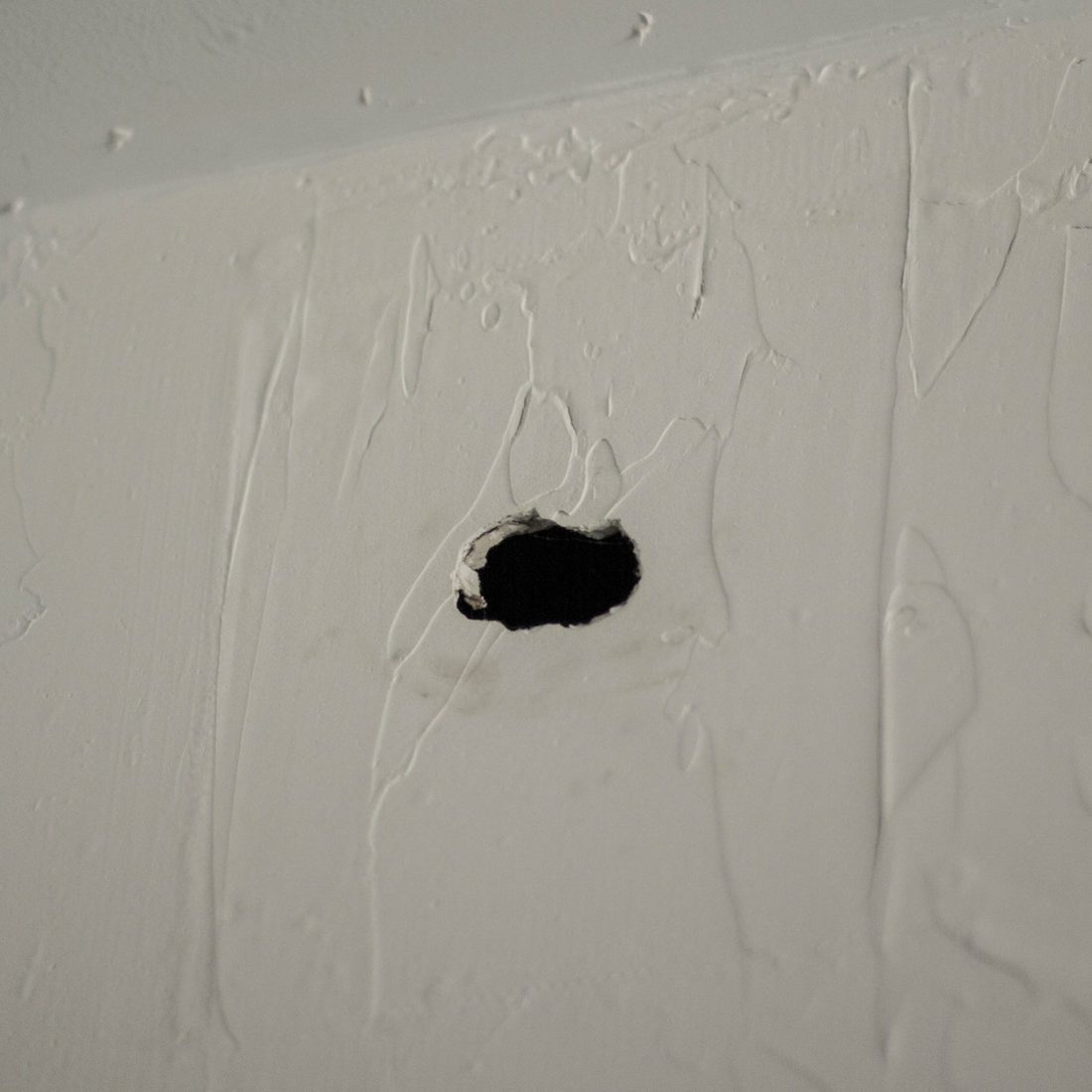
- DIY & Building
How to Repair a Crack or Small Hole in a Wall
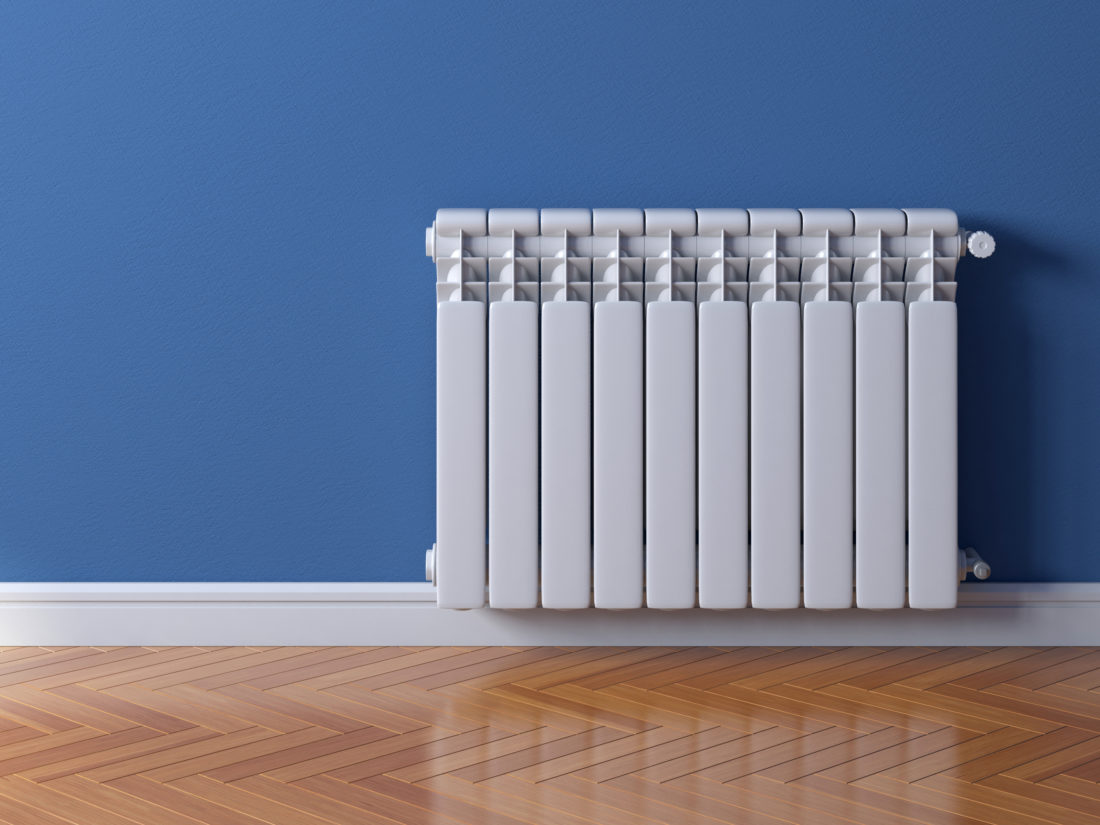
- DIY & Building
How to Bleed a Radiator
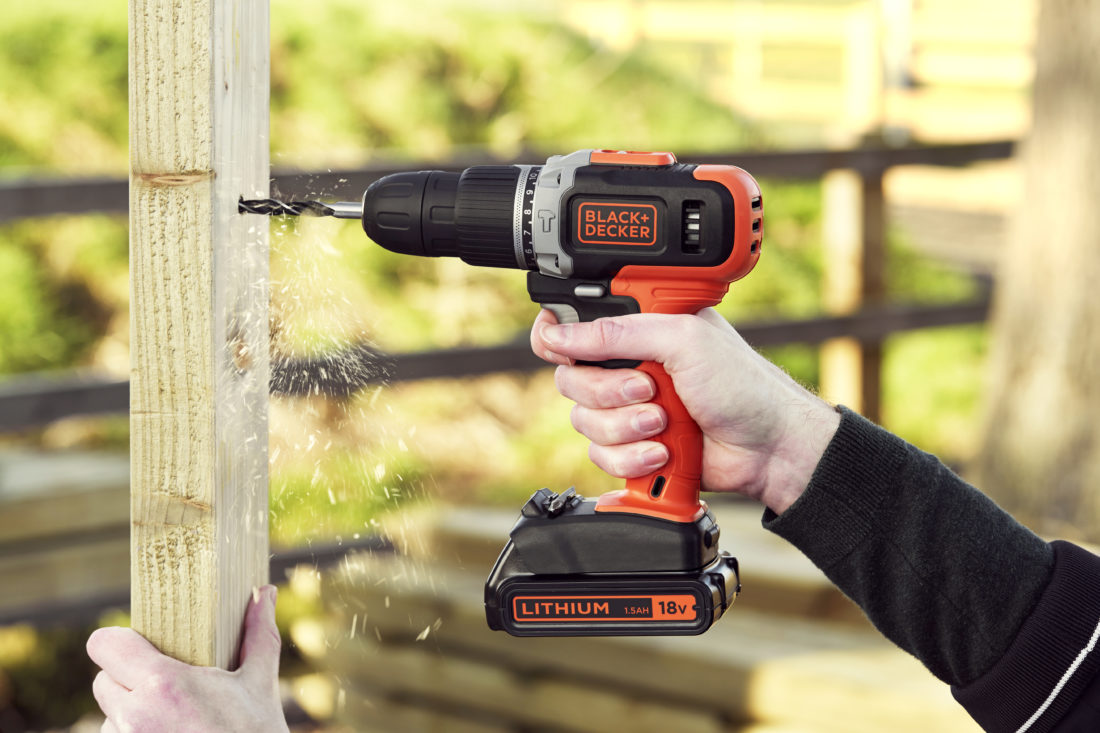
- DIY & Building
